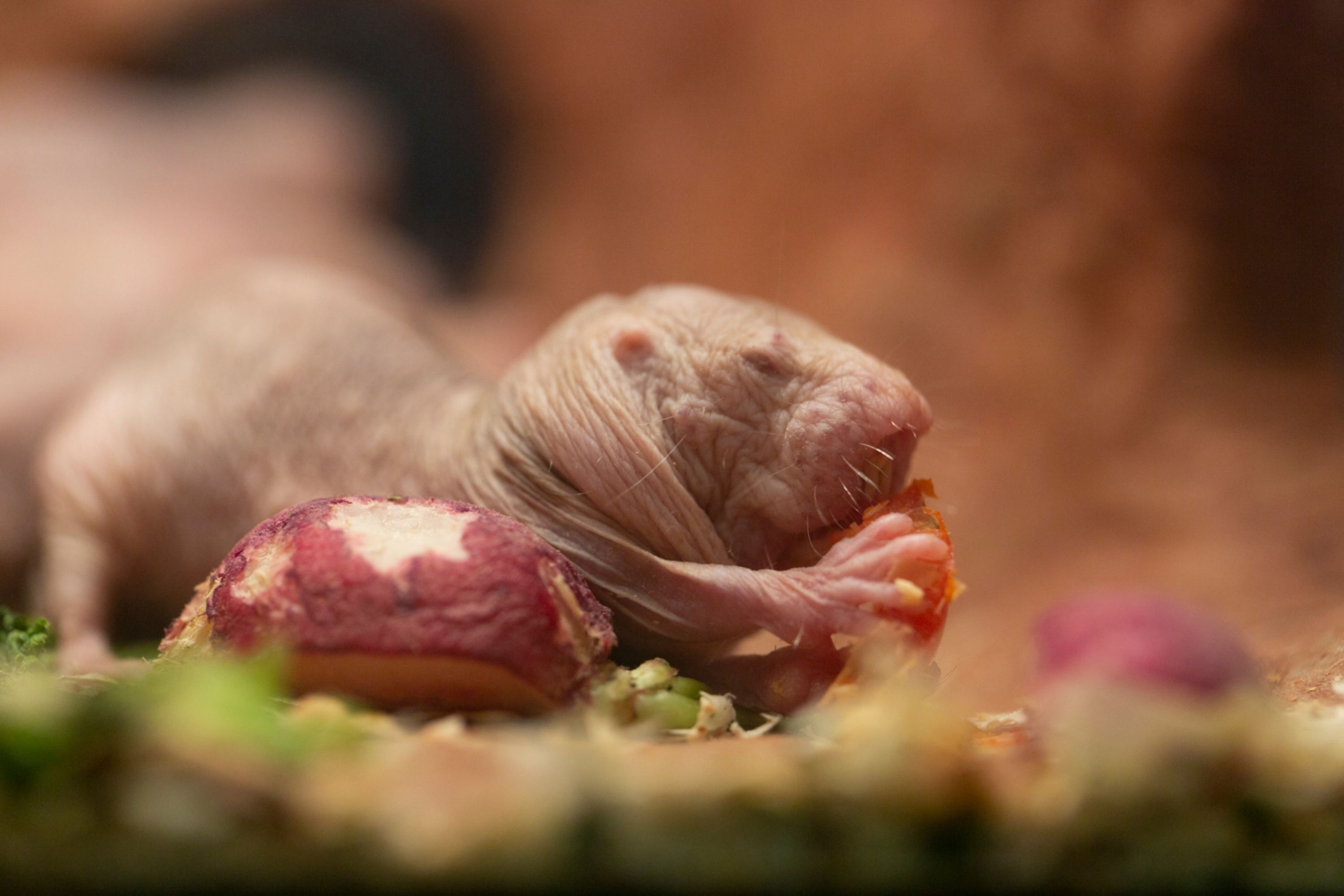Naked mole-rat
(Heterocephalus glaber)

Description
The naked mole-rat (Heterocephalus glaber), also known as the sand puppy, is a burrowing rodent native to parts of East Africa. It is closely related to the blesmols and is the only species in the genus Heterocephalus of the family Heterocephalidae. The naked mole-rat exhibits a highly unusual set of physical and behavioral traits that allow it to thrive in a harsh underground environment; most notably its being the only mammalian thermoconformer with an almost entirely ectothermic (cold-blooded) form of body temperature regulation, as well as exhibiting a complex social structure split between reproductive and non-reproductive castes, making it and the closely-related Damaraland mole-rat (Fukomys damarensis) the only widely recognized examples of eusociality (the highest classification of sociality) in mammals. The naked mole-rat lacks pain sensitivity in its skin, and has very low metabolic and respiratory rates. While formerly considered to belong to the same family as other African mole-rats, Bathyergidae, more recent investigation places it in a separate family, Heterocephalidae. The naked mole-rat is also remarkable for its longevity and its resistance to cancer and oxygen deprivation. Typical individuals are 8 to 10 cm (3 to 4 in) long and weigh 30 to 35 grams (1.1 to 1.2 oz). Queens are larger and may weigh well over 50 grams (1.8 oz), the largest reaching 80 grams (2.8 oz). They are well adapted to their underground existence. Their eyes are quite small, and their visual acuity is poor. Their legs are thin and short; however, they are highly adept at moving underground and can move backward as fast as they can move forward. Their large, protruding teeth are used to dig and their lips are sealed just behind the teeth, preventing soil from filling their mouths while digging. About a quarter of their musculature is used in the closing of their jaws while they dig. They have little hair (hence the common name) and wrinkled pink or yellowish skin. They lack an insulating layer in the skin. The naked mole-rat is well adapted to the limited availability of oxygen within the tunnels of its typical habitat. It has underdeveloped lungs and its hemoglobin has a high affinity for oxygen, increasing the efficiency of oxygen uptake. It has a very low respiration and metabolic rate for an animal of its size, about 70% that of a mouse, thus using oxygen minimally. In response to long periods of hunger, its metabolic rate can be reduced by up to 25 percent.
Taxonomic tree:







